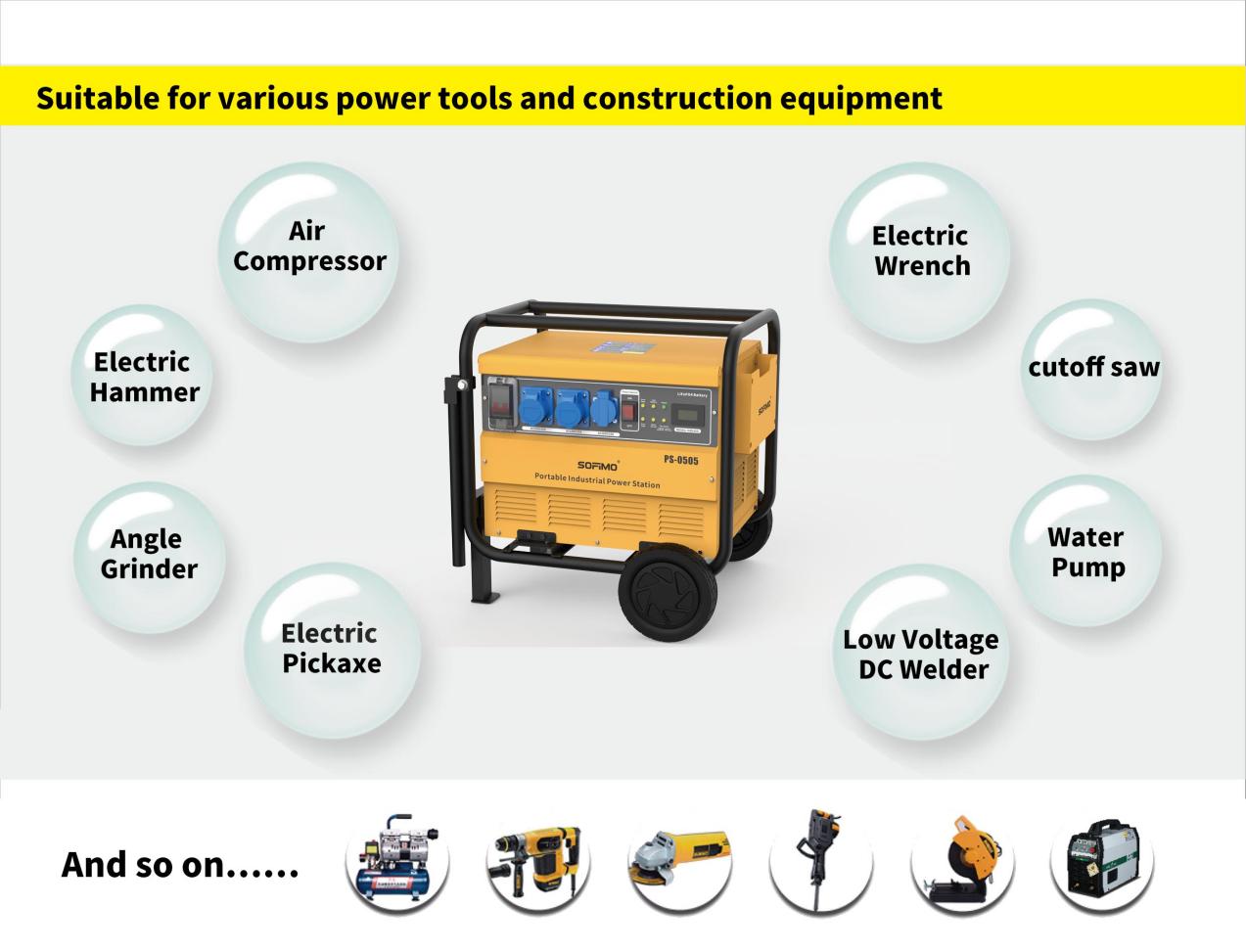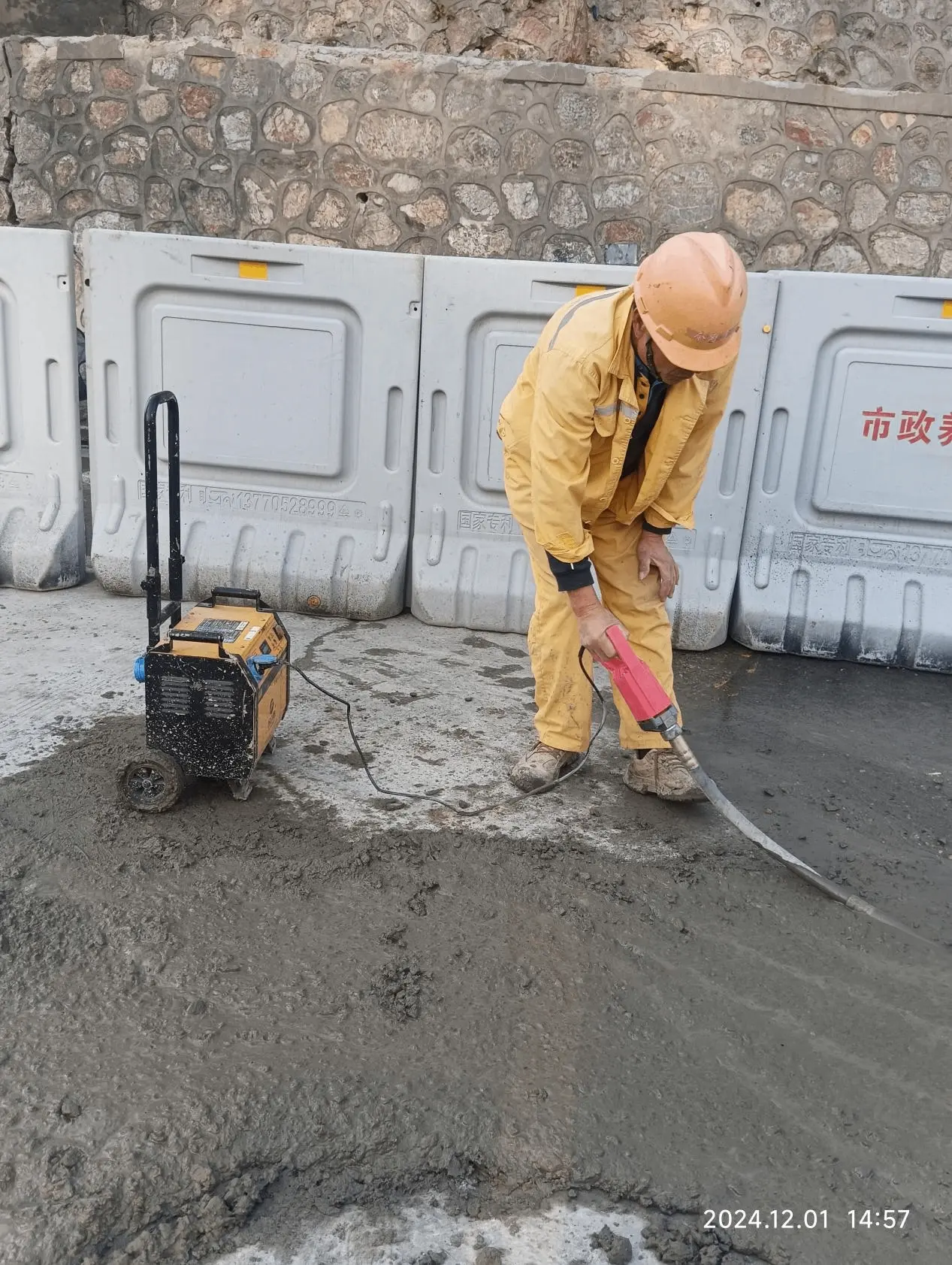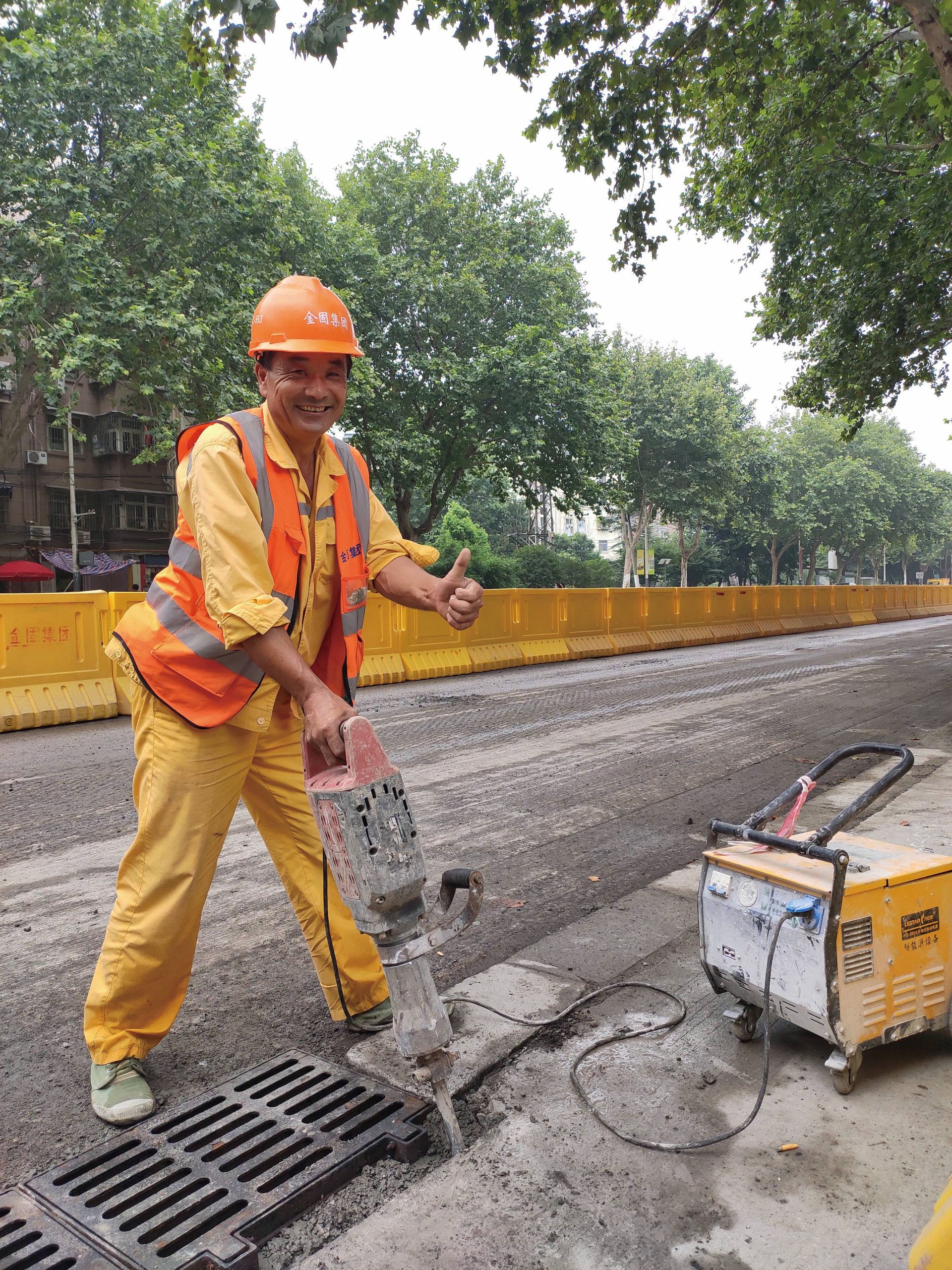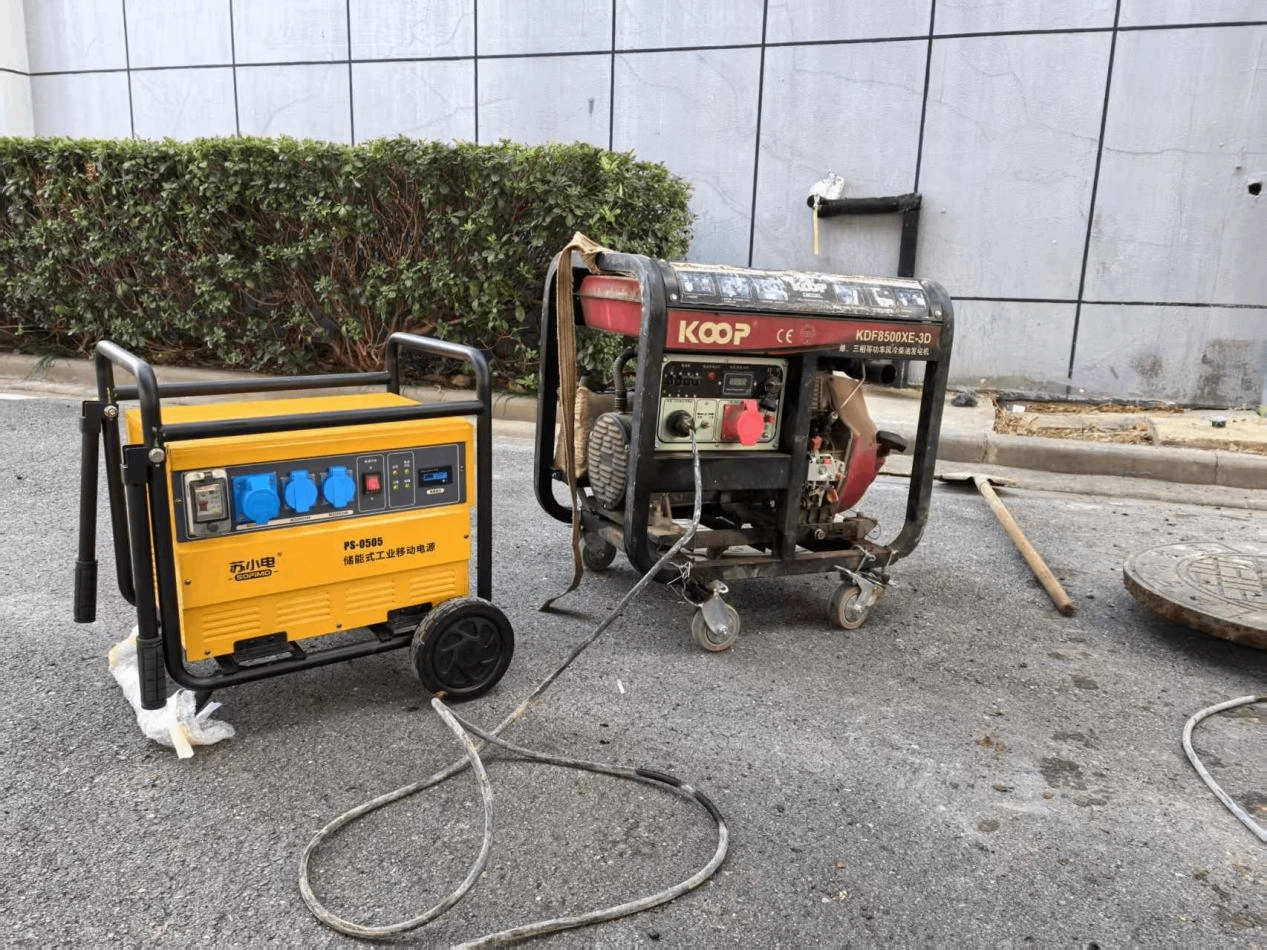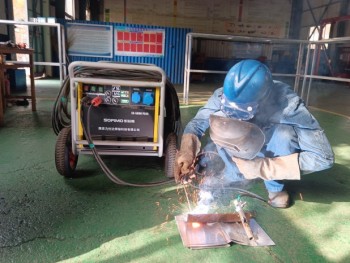Choosing the wrong mobile power unit for industrial use is frustrating. It leads to inefficiency, unexpected shutdowns, or wasted money on oversized gear. I know these mistakes disrupt operations and hurt the bottom line.
Selecting the right industrial mobile energy storage involves carefully matching the unit’s capabilities to your specific needs. I focus on three key areas: calculating the correct size, understanding temperature effects, and checking warranty terms.
Getting these details right ensures you invest in a reliable, safe, and cost-effective power solution. Let’s explore each of these critical factors so you can make an informed choice for your next purchase.
What Factors Influence the Optimal Size of Energy Storage forindustrial portable power station?
Buying a mobile power unit that’s too small leaves you without power when needed. Buying one too large wastes money upfront and on transport. I believe accurately calculating your power and energy needs is the first step.
The optimal size depends mainly on two things: the maximum power (kW) your equipment needs at any moment and the total energy (kWh) required over the operating time. I always analyze the load profile carefully.
Determining the right size for an industrial mobile energy storage unit isn’t just about picking one off a shelf. It requires understanding your specific application’s demands. Getting this wrong means either the unit can’t power your tools, or you’ve paid extra for capacity you’ll never use. Let’s break down the key factors.
Power Rating (kW) vs. Energy Capacity (kWh)
It’s vital to understand the difference between power and energy:
Power (Kilowatts – kW): This is the rate at which energy is delivered. Think of it like the speed of electricity flow. Your mobile power unit must have a high enough kW rating to meet the maximum combined power draw of all devices running simultaneously. Also, consider the peak power or surge power rating, as many tools require a burst of extra power when starting up.
Energy (Kilowatt-hours – kWh): This is the total amount of energy stored. Think of it like the amount of fuel in the tank. Your unit needs enough kWh capacity to run your equipment for the required duration without needing a recharge.
A unit might have a high power rating (kW) but low energy capacity (kWh), meaning it can power demanding tools but only for a short time. Conversely, a unit with high kWh but low kW can run low-power devices for a long time but can’t handle high-draw equipment.
Analyzing Your Load Profile
To choose the right size, you need to know what you’ll be powering.
Identify Devices: List all tools, lights, computers, or other equipment you plan to connect.
Check Power Consumption: Find the power consumption (in Watts or Kilowatts) for each device. This is usually on the device label or in its manual. Note both continuous running power and any peak/startup power.
Estimate Usage Duration: How long will each device run per charge cycle?
Calculate Total Energy: Multiply each device’s power (kW) by its runtime (hours) to get the energy needed (kWh). Sum these up for all devices.
Determine Peak Power: Find the maximum power needed at any single moment. This is often the sum of the running power of all devices operating together, plus the startup surge of the largest motor.
Other Sizing Considerations
Charge/Discharge Rate (C-Rate): This indicates how quickly the battery can be charged or discharged relative to its capacity. A high C-rate is needed for applications demanding rapid power delivery or quick recharging.
Future Needs: Consider if your power requirements might increase soon. Buying slightly larger might be prudent.
Efficiency Losses: Remember that some energy is lost during power conversion (DC from battery to AC for tools). Factor in a buffer (e.g., 10-20%) to account for this.
Here’s a simple example calculation:
| Device | Running Power (W) | Peak Power (W) | Runtime (Hours) | Energy Needed (Wh) |
| Large Drill | 800 W | 1600 W | 1 | 800 Wh |
| Work Lights | 100 W | 100 W | 4 | 400 Wh |
| Laptop Charger | 50 W | 50 W | 4 | 200 Wh |
| Totals | 950 W | 1750 W | 1400 Wh (1.4 kWh) |
In this case, you’d need a unit with:
At least 1.75 kW peak power output (to handle the drill startup while others run).
At least 0.95 kW continuous power output.
At least 1.4 kWh energy capacity (plus a buffer, so maybe 1.6-1.7 kWh).
Carefully analyzing these factors ensures you select a unit that meets your needs without overspending.
How Does the Ambient Temperature Affect Energy Storage industrial portable power station?
Using mobile power in extreme heat or cold can cause unexpected problems. Batteries might not charge, capacity seems lower, or worse, the unit might fail completely. I know temperature is a critical factor for battery health.
Ambient temperature drastically affects both performance and lifespan. High heat degrades batteries faster, while extreme cold reduces available capacity and power output. I always verify the specified operating temperature range.
Battery chemistry, especially the lithium-ion types commonly used in industrial mobile power stations, is sensitive to temperature. Operating or storing these units outside their recommended temperature range can lead to reduced performance, accelerated aging, and even safety hazards. Understanding these effects is crucial for reliable operation in demanding industrial environments.
Effects of High Temperatures
Heat is generally the enemy of battery longevity.
Accelerated Degradation: Higher temperatures speed up the chemical reactions inside the battery cells. This includes parasitic reactions that consume lithium inventory and degrade electrode materials, leading to permanent capacity loss. The lifespan of the battery can be significantly shortened if frequently operated or stored in hot conditions (e.g., above 35-40°C or 95-104°F).
Reduced Efficiency: While batteries might discharge slightly better at moderately warm temperatures, extreme heat increases internal resistance, leading to higher energy losses as heat.
Safety Risks: Overheating can trigger thermal runaway in lithium-ion cells, a dangerous condition where increasing temperature causes further reactions, potentially leading to venting, fire, or explosion. Quality units have thermal management systems (fans, heat sinks) and BMS protection to prevent this, but operating well beyond limits still poses risks.
Component Stress: High temperatures also stress other electronic components within the power station, such as the inverter and control boards, potentially leading to premature failure.
Effects of Low Temperatures
Cold temperatures primarily impact performance rather than causing rapid permanent degradation (though charging in freezing temps can be damaging).
Reduced Capacity: The electrochemical reactions inside the battery slow down in the cold. This increases internal resistance and reduces the mobility of lithium ions, making it harder to extract energy. The result is a temporary reduction in available capacity – your 1kWh battery might only deliver 0.7kWh or less in freezing conditions.
Reduced Power Output: The increased internal resistance also limits the rate at which power can be drawn. High-draw tools might not start or run properly, even if the battery is fully charged.
Charging Issues: Charging lithium-ion batteries below freezing (0°C or 32°F) is particularly problematic. It can cause lithium plating on the anode, which is irreversible, reduces capacity, and can create internal short circuits, posing a safety risk. Many quality BMS systems prevent charging below a certain temperature threshold (e.g., 0°C or sometimes 5°C). Some units incorporate internal heaters to allow charging in colder environments.
What to Look For
When selecting a unit, check the manufacturer’s specifications carefully:
Operating Temperature Range: This defines the temperatures within which the unit can safely charge and discharge. Pay attention to potentially different ranges for charging vs. discharging.
Storage Temperature Range: The recommended temperature range for storing the unit when not in use to minimize degradation.
Thermal Management: Does the unit have active cooling (fans) or heating systems? This indicates better suitability for wider temperature ranges.
Understanding these temperature limitations is vital. If you regularly work in very hot or cold climates, choose a unit specifically designed and rated for those conditions. Always try to operate and store the unit within its recommended temperature window for optimal performance and longevity.
What Are the Typical Warranty Terms and Maintenance Requirements for industrial portable power station Products?
Buying industrial equipment is an investment, but what happens if it fails early? Or requires complex upkeep? Unexpected costs and downtime are major concerns. I always examine warranty details and maintenance needs before buying.
Warranty terms vary, typically covering 1-5 years or a specific number of charge cycles against manufacturing defects. I look for clear coverage details. Maintenance is usually minimal: keep it clean, store it properly, and check connections.
Like any significant equipment purchase, understanding the warranty and ongoing maintenance requirements for an industrial mobile power station is crucial. This knowledge helps you anticipate long-term costs, ensures you get support if issues arise, and helps maximize the lifespan of your investment.
Typical Warranty Terms
Warranties on these products can differ significantly between manufacturers and models. Here’s what to look for:
Duration: This is often expressed in years (commonly 1, 2, 3, or sometimes 5 years from the date of purchase) or by the number of charge/discharge cycles (e.g., 500, 1000, 2000 cycles), whichever comes first. Cycle life warranties are often tied to a certain remaining capacity (e.g., warranty valid until the battery completes 2000 cycles or retains 80% of its original capacity).
Coverage: Most warranties cover defects in materials and workmanship. This means the manufacturer will repair or replace the unit if it fails due to a manufacturing fault. It typically does not cover:
Normal wear and tear (gradual capacity loss over time is expected).
Damage from misuse, accidents, improper storage, or unauthorized modifications.
Damage from operating outside the specified environmental conditions (like temperature).
Process: Understand how to make a warranty claim. Do you need to return the unit? Who pays for shipping? What is the typical turnaround time for repairs or replacement?
Prorated vs. Full: Some warranties might be prorated, meaning the coverage value decreases over time. Others offer full repair or replacement throughout the warranty period.
Common Maintenance Requirements
Industrial mobile power stations are generally designed for low maintenance compared to traditional generators. However, some basic care is usually recommended:
Visual Inspection: Regularly check the unit’s casing for any signs of damage, swelling, or leaks. Inspect ports and connectors for dirt, debris, or corrosion.
Cleaning: Keep the unit clean, especially air vents for cooling fans. Use a dry or slightly damp cloth; avoid harsh chemicals or immersing the unit.
Connection Checks: Ensure charging cables and output cables are in good condition and connections are secure.
Storage: When storing the unit for extended periods, follow the manufacturer’s recommendations. This usually involves:
Storing it within the recommended temperature range (avoid extremes).
Storing it at a partial state of charge (e.g., 40-60%), not fully charged or fully depleted, to minimize degradation. Check the manual for specific advice.
Periodically recharging it (e.g., every 3-6 months) to prevent deep discharge.
Firmware Updates: Some advanced units may occasionally receive firmware updates from the manufacturer to improve performance or fix bugs. Check if this applies and how updates are performed.
Here’s a quick comparison of warranty aspects:
| Feature | Common Range/Type | What to Verify |
| Duration (Time) | 1-5 Years | Exact number of years from purchase date. |
| Duration (Cycles) | 500 – 3000+ Cycles | Cycle count limit & definition of a cycle. |
| Capacity Retention | e.g., >80% after X cycles/years | Specific percentage and timeframe guaranteed. |
| Coverage | Defects in materials/workmanship | Exclusions (misuse, wear & tear, environmental). |
| Claim Process | Return-to-base, shipping costs? | Procedure, contact info, expected turnaround. |
| Type | Full or Prorated | Does coverage value decrease over time? |
Always read the warranty documentation carefully before purchasing. A clear, comprehensive warranty backed by a responsive supplier provides peace of mind and protects your investment. Minimal maintenance requirements make these units convenient, but following the basic guidelines ensures longevity.
Choosing the right industrial mobile power requires careful thought. Focus on correct sizing, verified safety certifications, temperature tolerance, and clear warranty terms. These steps ensure reliable power for your demanding applications.If you need them, contact us now with 20 years of experience in battery powered welding machine production and delivery to provide you with service.

